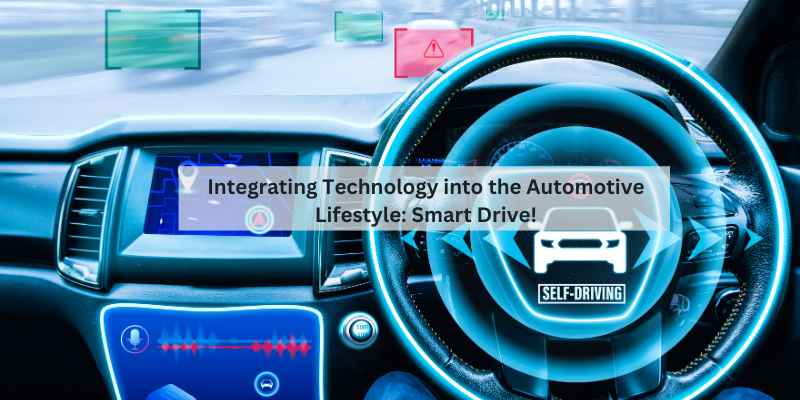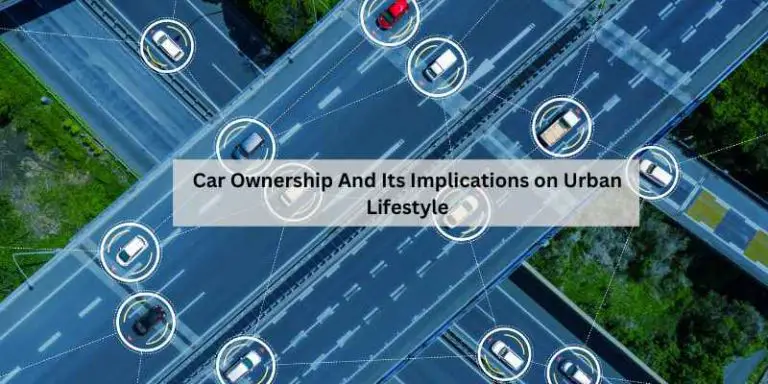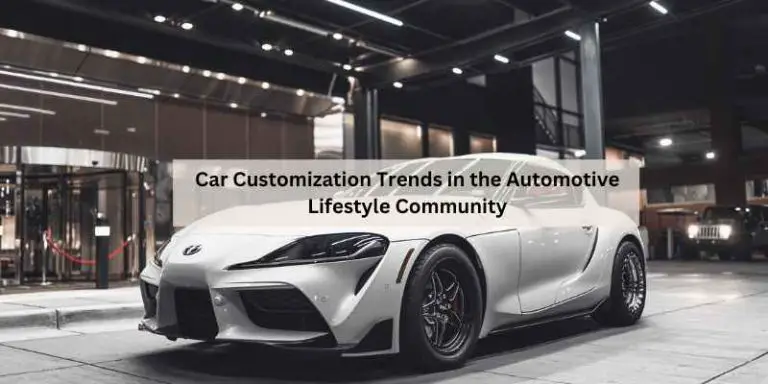Integrating Technology into the Automotive Lifestyle: Smart Drive!
Integrating technology into the automotive lifestyle is crucial. With the increasing demand for smarter and more efficient vehicles, incorporating technology has become a necessity.
From self-driving cars to electric vehicles, technology has revolutionized the automotive industry, making driving safer, more convenient, and environmentally friendly. Today’s cars are equipped with advanced features such as navigation systems, rear-view cameras, and automatic emergency braking, just to name a few.
Moreover, technology has enabled vehicles to communicate with each other, providing real-time traffic updates and alerts. As technology continues to evolve, it is safe to say that the future of the automotive industry will be shaped by technology. This article will explore the various ways technology has transformed the automotive industry, the benefits of integrating technology into the automotive lifestyle, and what the future holds for the industry.
The Evolution Of Automotive Technology
The integration of technology into the automotive lifestyle has led to a remarkable evolution in automotive technology. From self-driving cars to advanced safety features and connectivity options, technology has transformed the way we interact with our vehicles, making driving safer, more efficient, and enjoyable.
With the continuous advancements in artificial intelligence and smart vehicle systems, the future of automotive technology holds even more exciting possibilities.
From Manual To Autonomous: A Timeline
The evolution of automotive technology has been nothing short of remarkable. Over the years, vehicles have transformed from simple mechanical machines into sophisticated pieces of technology. This article will take you on a journey through time, exploring the key milestones that have shaped the automotive industry. From the early days of manual controls to the emergence of autonomous vehicles, let’s delve into the fascinating timeline of automotive technology.
Key Milestones In Vehicle Tech Advancements
1. 1886 – The Birth of the Automobile: Karl Benz patented the first gasoline-powered automobile, the Benz Patent-Motorwagen, marking the beginning of the automotive revolution.
2. 1908 – The Model T: Henry Ford introduced the Model T, the first affordable and mass-produced automobile, making cars accessible to the general public.
3. 1920s – Radios and Electric Starters: Radios became a popular addition to cars, providing entertainment on the go. Electric starters also replaced hand cranks, making it easier to start the engine.
4. 1950s – Power Steering and Automatic Transmissions: Power steering systems were introduced, reducing the effort required to maneuver vehicles. Automatic transmissions also gained popularity, offering a smoother and more convenient driving experience.
5. 1970s – Anti-lock Braking Systems (ABS): ABS technology was developed, allowing drivers to maintain control of their vehicles during emergency braking by preventing wheel lock-up.
6. 1990s – Electronic Stability Control (ESC): ESC systems were introduced, enhancing vehicle stability and preventing skidding or loss of control in challenging driving conditions.
7. 2000s – Hybrid and Electric Vehicles: The rise of environmentally friendly vehicles began, with the introduction of hybrid and electric cars aiming to reduce carbon emissions.
8. 2010s – Advanced Driver Assistance Systems (ADAS): ADAS technologies, such as adaptive cruise control and lane-keeping assist, started to integrate into vehicles, enhancing safety and convenience on the road.
9. Present and Future – Autonomous Vehicles: The development of autonomous vehicles has gained significant momentum, with self-driving cars promising to revolutionize transportation in the coming years.
As technology continues to advance, we can only imagine what the future holds for the automotive industry. From manual controls to autonomous vehicles, the evolution of automotive technology has transformed the way we live and travel.
Smart Cars And Connectivity
Integrating technology into the automotive lifestyle has revolutionized how we interact with our vehicles. Smart Cars and Connectivity play a crucial role in enhancing the driving experience by leveraging the power of IoT and Vehicle-to-Everything Communication.
Enhancing The Driving Experience With Iot
IoT technology in cars enables seamless connectivity for a more interactive driving experience.
- Real-time vehicle diagnostics
- Remote vehicle monitoring
- Automated maintenance alerts
Vehicle-to-everything Communication
Vehicle-to-Everything (V2X) communication allows cars to communicate with each other and their surroundings.
- Enhanced safety through collision avoidance
- Improved traffic flow with real-time data sharing
- Optimized navigation for efficient routes
Safety First: Tech Innovations
When it comes to integrating technology into the automotive lifestyle, safety is of paramount importance. Innovative tech solutions have greatly enhanced vehicle safety, offering a range of advanced features to protect drivers, passengers, and pedestrians. Let’s delve into the world of safety-first tech innovations.
Advanced Driver-assistance Systems (adas)
ADAS encompasses a suite of safety features designed to assist drivers in the driving process. These systems utilize cutting-edge technology such as sensors, cameras, and radar to enhance vehicle safety. Key ADAS functionalities include lane departure warning, adaptive cruise control, automatic emergency braking, and blind-spot detection. These innovations work cohesively to mitigate the risk of accidents and enhance overall driving safety.
Impact Of Ai On Vehicle Safety
Artificial Intelligence (AI) has revolutionized vehicle safety, playing a pivotal role in the development of autonomous driving technology. AI algorithms enable vehicles to analyze and respond to their surroundings, significantly reducing the likelihood of collisions. Moreover, AI-powered predictive maintenance systems can preemptively identify potential vehicle malfunctions, ensuring optimal safety and reliability on the road.
Eco-friendly Tech Solutions
Integrating eco-friendly technology into the automotive lifestyle is becoming increasingly popular. From electric cars to sustainable materials, these tech solutions are designed to reduce carbon emissions and promote a more sustainable future.
Electric Vehicles And Sustainable Tech

Electric vehicles are revolutionizing transportation with zero emissions.
Reducing Carbon Footprint With Smart Technology
Smart tech in vehicles helps minimize environmental impact effectively.
Electric Vehicles:
- Run on electricity instead of fossil fuels.
- Produce zero tailpipe emissions, reducing pollution.
- Are powered by renewable energy sources like solar and wind.
Sustainable Tech:
- Utilizes eco-friendly materials in vehicle construction.
- Optimizes fuel efficiency through advanced engineering.
- Offers regenerative braking to conserve energy.
The In-car Infotainment Revolution
Experience the in-car infotainment revolution by seamlessly integrating technology into your automotive lifestyle. Stay connected, entertained, and informed on-the-go with cutting-edge features enhancing your driving experience.
The In-Car Infotainment Revolution has changed the automotive lifestyle for drivers and passengers alike. With advancements in technology, in-car entertainment systems have transformed into interactive hubs where drivers can access a wide variety of features with just a few taps or voice commands. From touchscreens to voice commands and apps, let’s explore the different ways technology has revolutionized the way we experience entertainment in our cars.
Touchscreens
The introduction of touchscreens has been a game-changer for in-car infotainment systems. Drivers can now interact with their car’s entertainment system in a way that feels natural and intuitive. With a simple tap or swipe, they can navigate through menus, adjust settings, and control music and media playback. The screen size and resolution have also improved, providing a better visual experience for users.
Voice Commands
Voice commands have made it even easier for drivers to interact with their car’s entertainment system without taking their hands off the wheel. Users can use voice commands to make calls, send texts, play music, and even get directions. This feature has not only made driving safer but has also made it more convenient for drivers who want to access their car’s features without taking their eyes off the road.
Apps
The availability of apps has expanded the possibilities for in-car entertainment systems. Drivers and passengers can now access a wide range of apps directly from their car’s infotainment system. From music streaming services to weather and traffic updates, there are countless apps available to enhance the driving experience. App developers have also started creating apps specifically designed for in-car use, providing users with a more customized experience.
Customizing the User Experience is key to ensuring that each driver’s experience is tailored to their preferences. In-car infotainment systems offer a range of customization options, from personalized settings to user profiles. This feature allows drivers to save their preferred settings and access them quickly and easily. With the In-Car Infotainment Revolution, drivers can now enjoy a more interactive and personalized driving experience.
Navigating The World With Advanced Gps
Integrating technology into the automotive lifestyle has revolutionized the way we navigate the world. Advanced GPS systems have made traveling more efficient, convenient, and safe than ever before.
Real-time Traffic Updates And Route Optimization
Real-time traffic updates provided by advanced GPS systems allow drivers to stay informed about the current road conditions, avoiding congestion and potential delays.
The Integration Of Augmented Reality In Navigation
Augmented reality has been seamlessly integrated into navigation systems, providing drivers with a more intuitive and immersive way to interact with their surroundings while on the road.
Maintenance Goes High-tech
Modern automotive maintenance embraces high-tech solutions that streamline upkeep procedures.
Predictive Maintenance With Iot
IoT enables predictive maintenance by monitoring vehicle data in real-time.
Remote Diagnostics And Over-the-air Updates
Remote diagnostics offer instant troubleshooting and over-the-air updates enhance vehicle software remotely.
Future Trends In Automotive Tech
Integrating technology into the automotive lifestyle is transforming the way we drive and interact with vehicles. Let’s explore the upcoming trends in automotive technology that are shaping the future of transportation.
The Role Of 5g In Next-gen Vehicles
5G technology promises faster and more reliable connectivity for next-generation vehicles.
- Enhanced communication between vehicles and infrastructure.
- Real-time data transmission for improved safety and navigation.
- Support for autonomous driving features and connected services.
Autonomous Vehicles: The Road Ahead
The advancement of autonomous vehicles is paving the way for a new era of transportation.
- Integration of AI for enhanced decision-making capabilities.
- Development of advanced sensors for improved situational awareness.
- Regulatory framework implementation for safe deployment on public roads.

Frequently Asked Questions
How Has Technology Impacted The Automotive Industry?
Technology has revolutionized the automotive industry, enhancing safety, performance, and efficiency. Advanced systems like self-driving features and electric vehicles are shaping the future of transportation. Additionally, technologies such as AI and IoT are improving the overall driving experience and paving the way for sustainable mobility solutions.
What Are 5 Ways Technology Is Changing The Automotive Industry?
Technology is changing the automotive industry through autonomous vehicles, electric cars, connectivity features, advanced safety systems, and improved manufacturing processes.
What Is System Integration In Automotive Industry?
System integration in the automotive industry refers to the process of combining different electronic systems and components within a vehicle to ensure they work together seamlessly. This integration allows for efficient communication and coordination between various systems, such as engine management, safety features, and infotainment.
It enhances vehicle performance, functionality, and user experience.
What Are The Joining Technologies In Automotive Industry?
Joining technologies in the automotive industry include welding, adhesive bonding, riveting, and fastening. These methods are used to assemble different parts of vehicles together.
Conclusion
Incorporating technology into the automotive lifestyle has revolutionized the way we drive and interact with our vehicles. From advanced safety features to seamless connectivity, the integration of technology has enhanced our driving experience. As we continue to embrace these advancements, it is crucial to stay informed about the latest trends and innovations in the automotive industry.
By keeping up with technology, we can ensure a safer, more efficient, and enjoyable driving experience for years to come.








